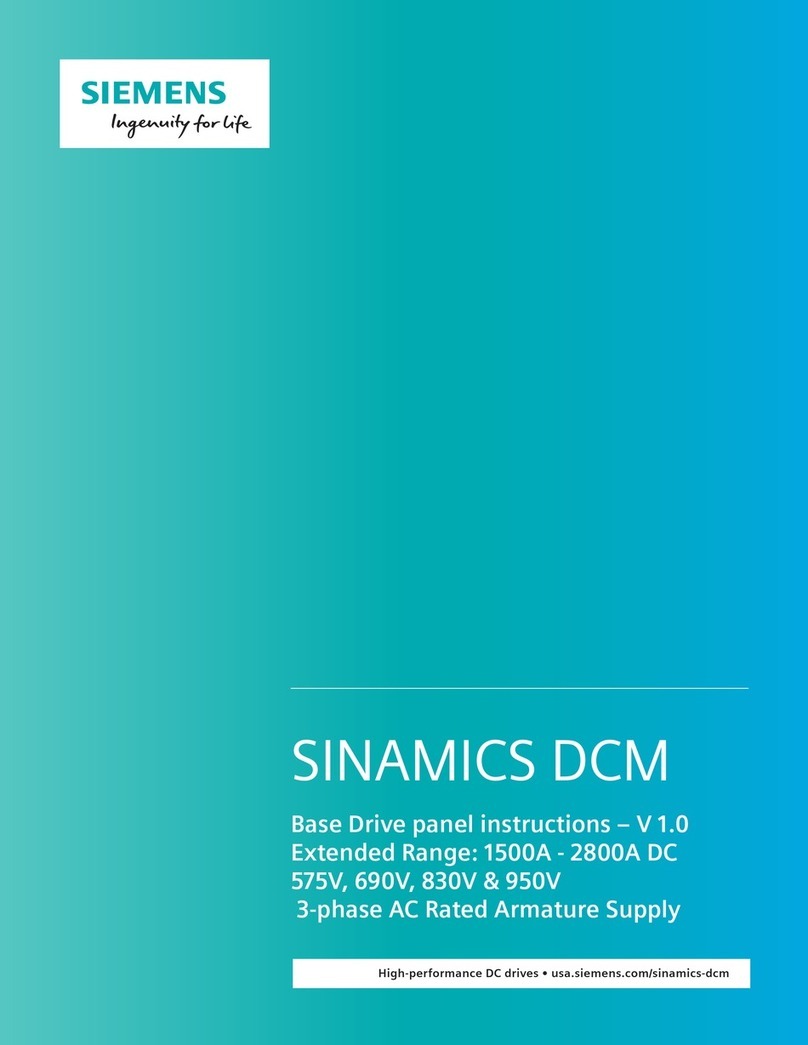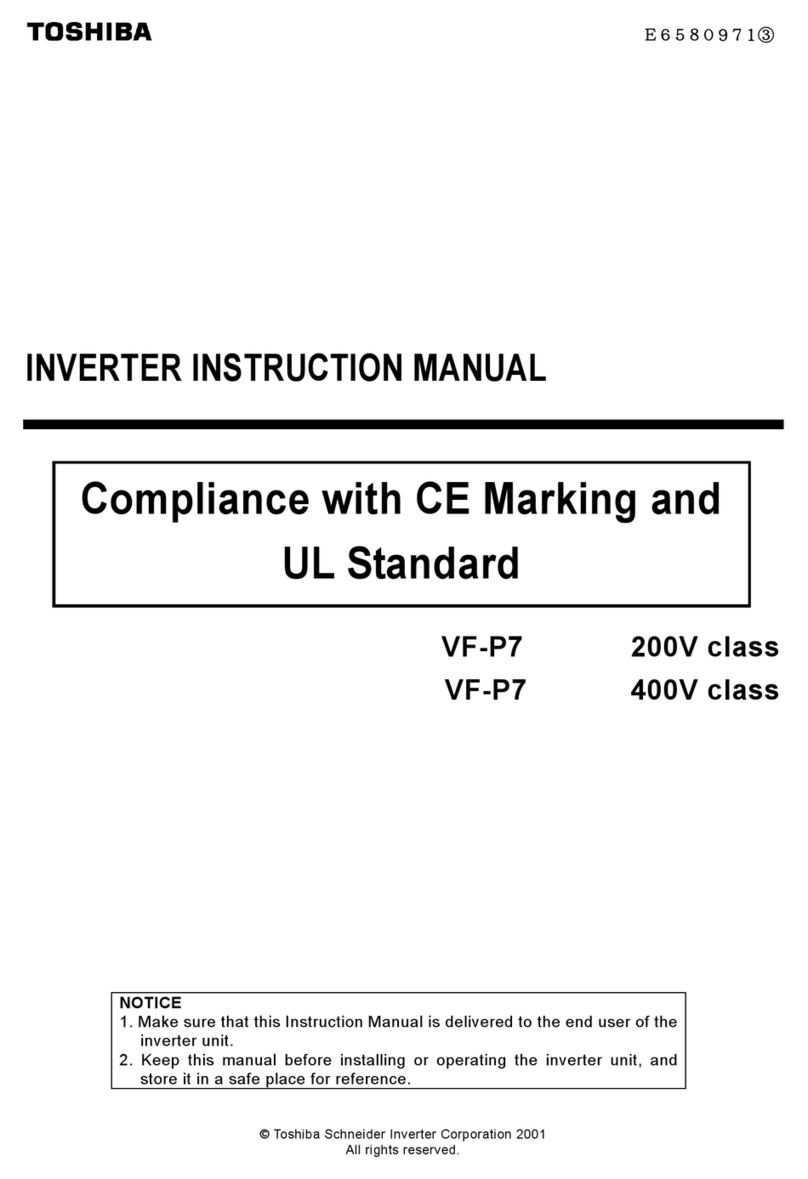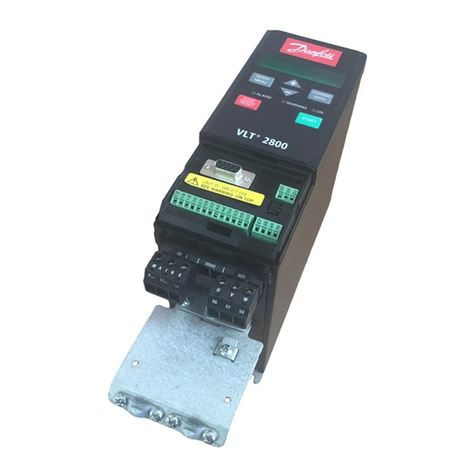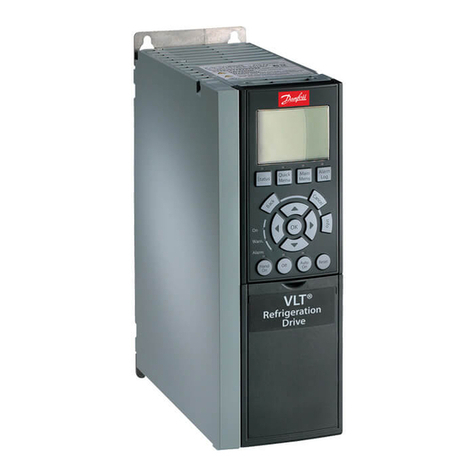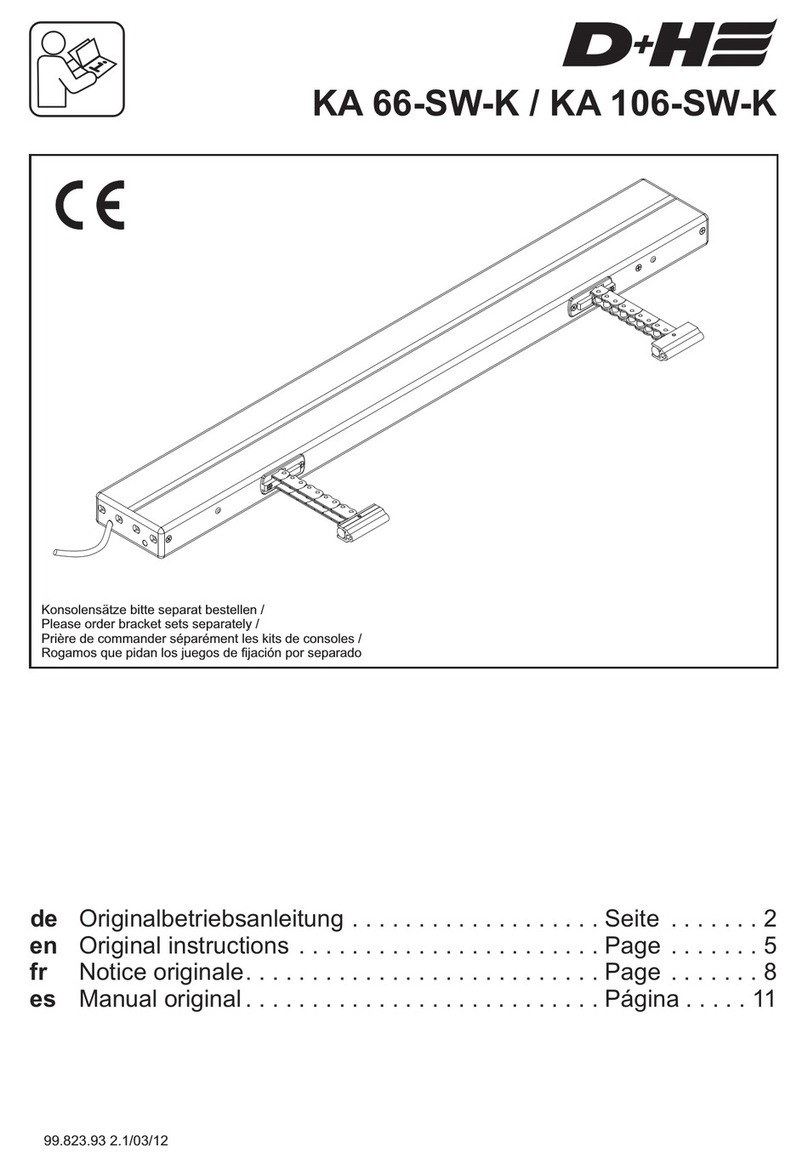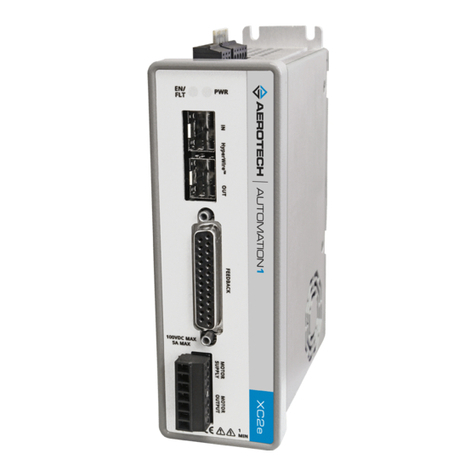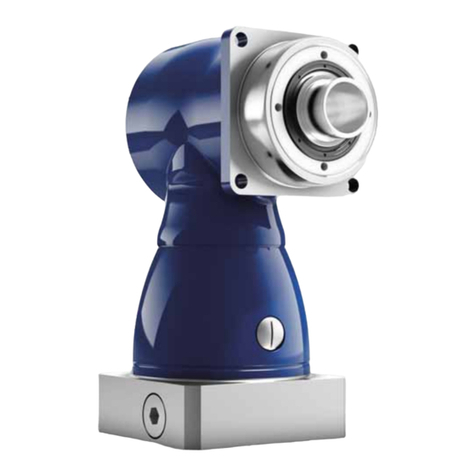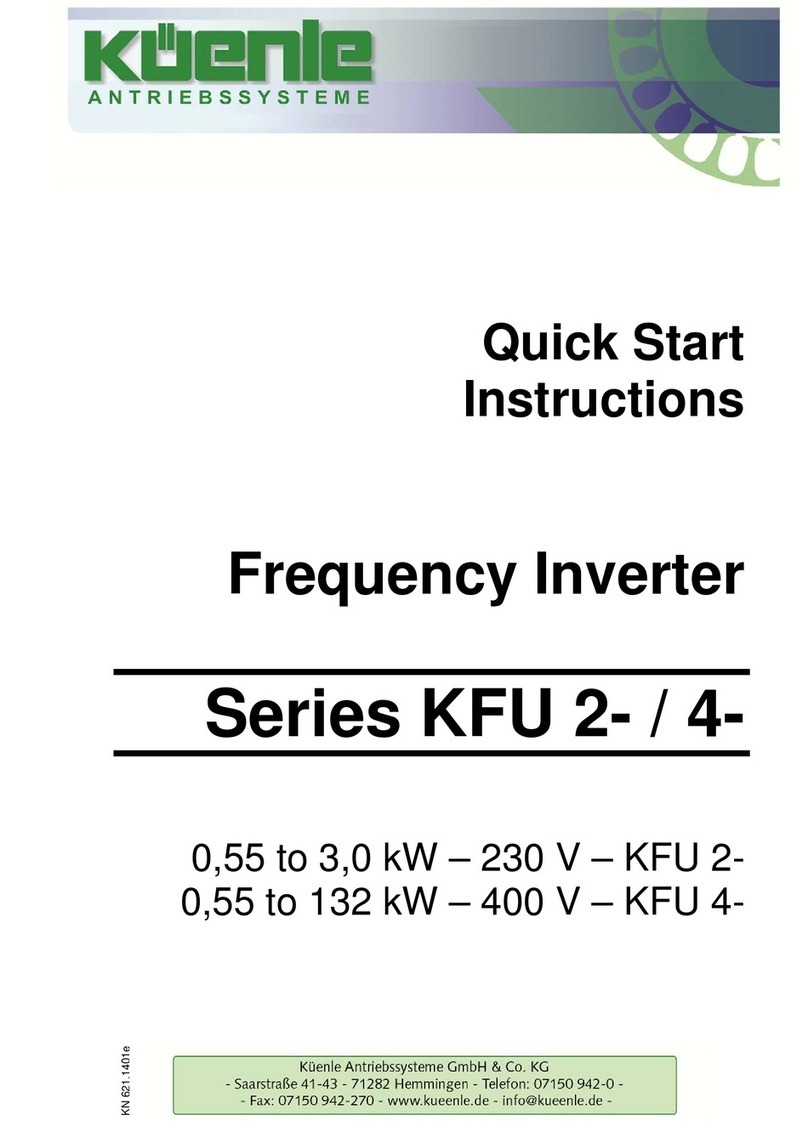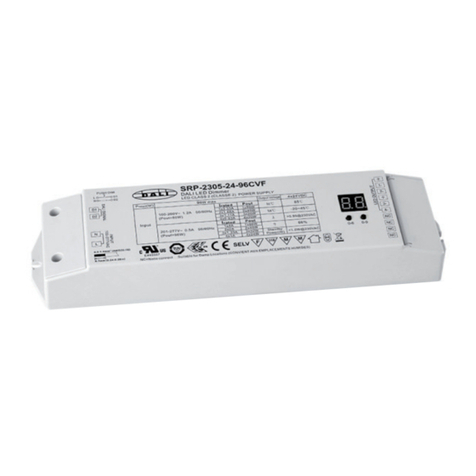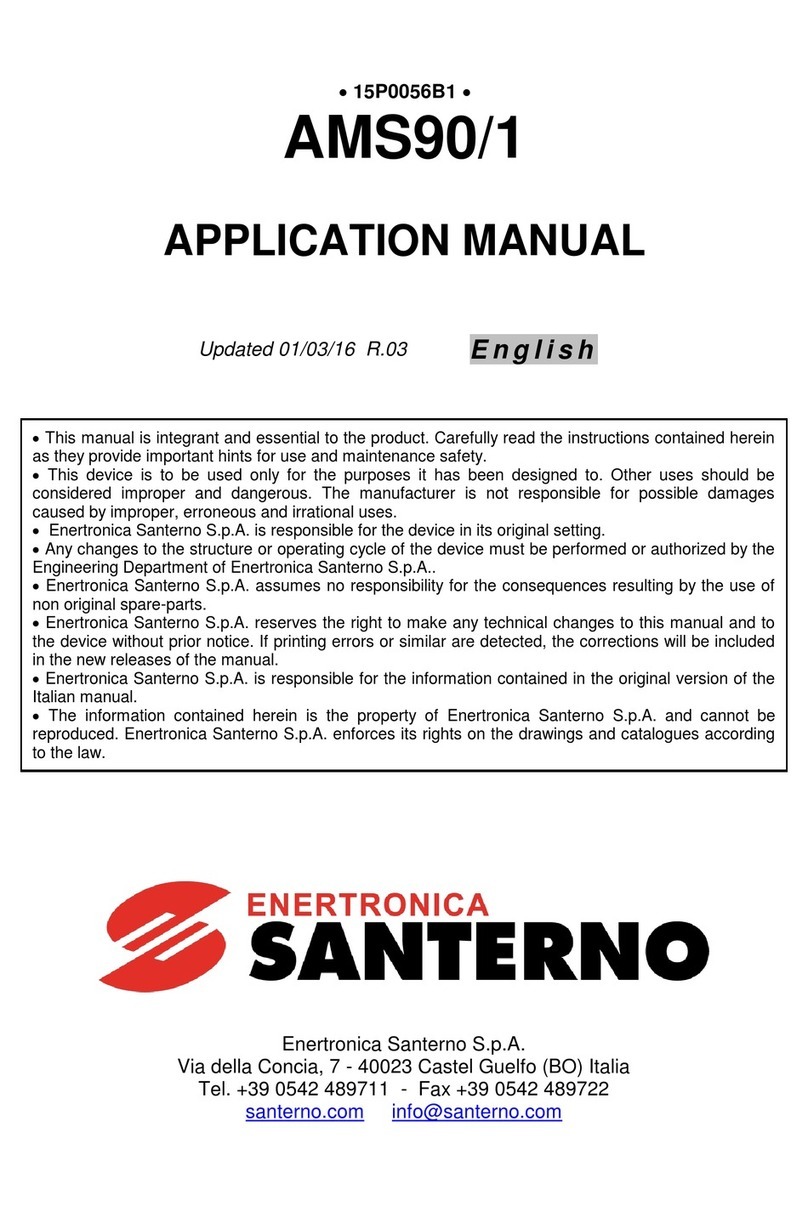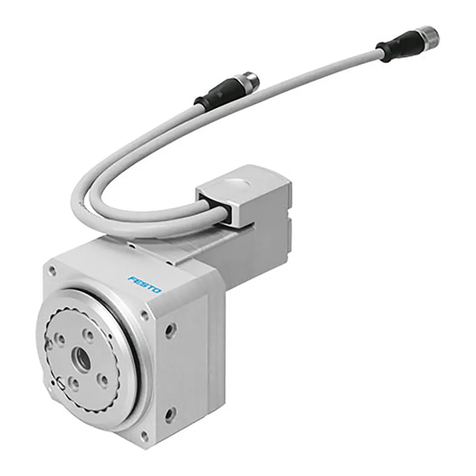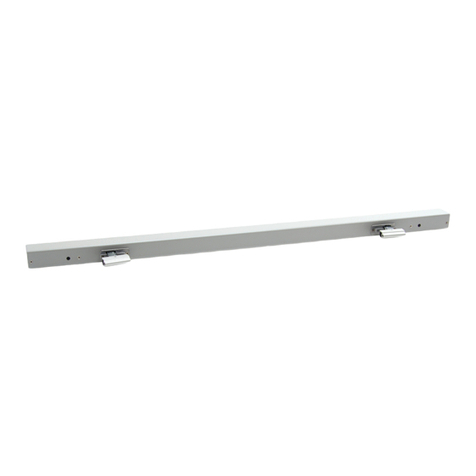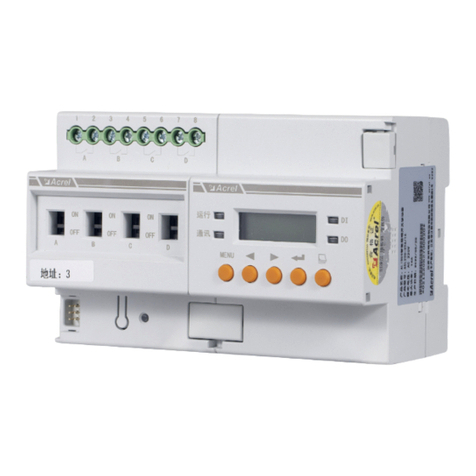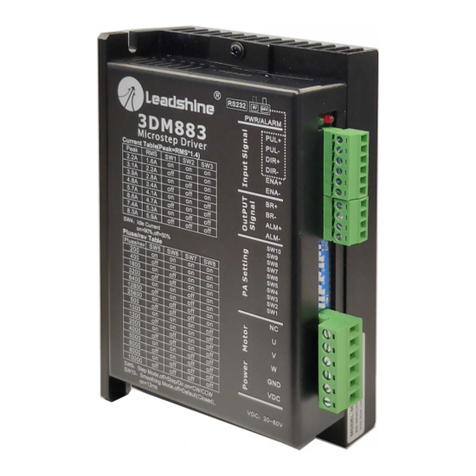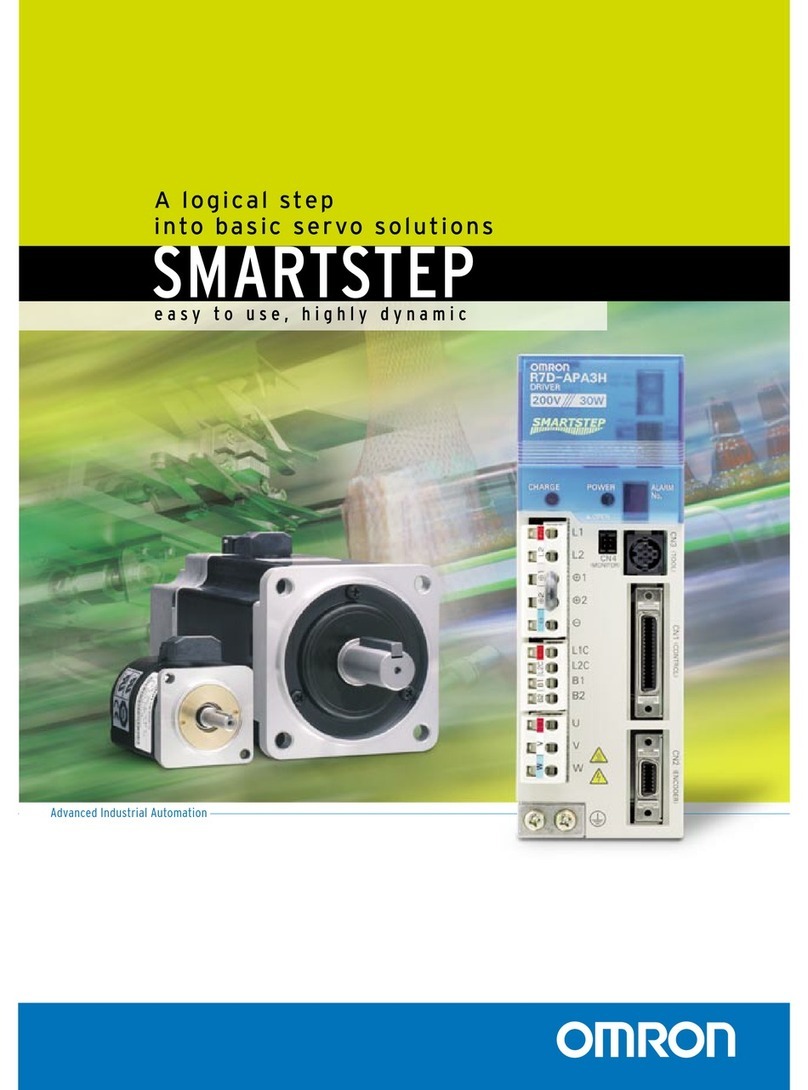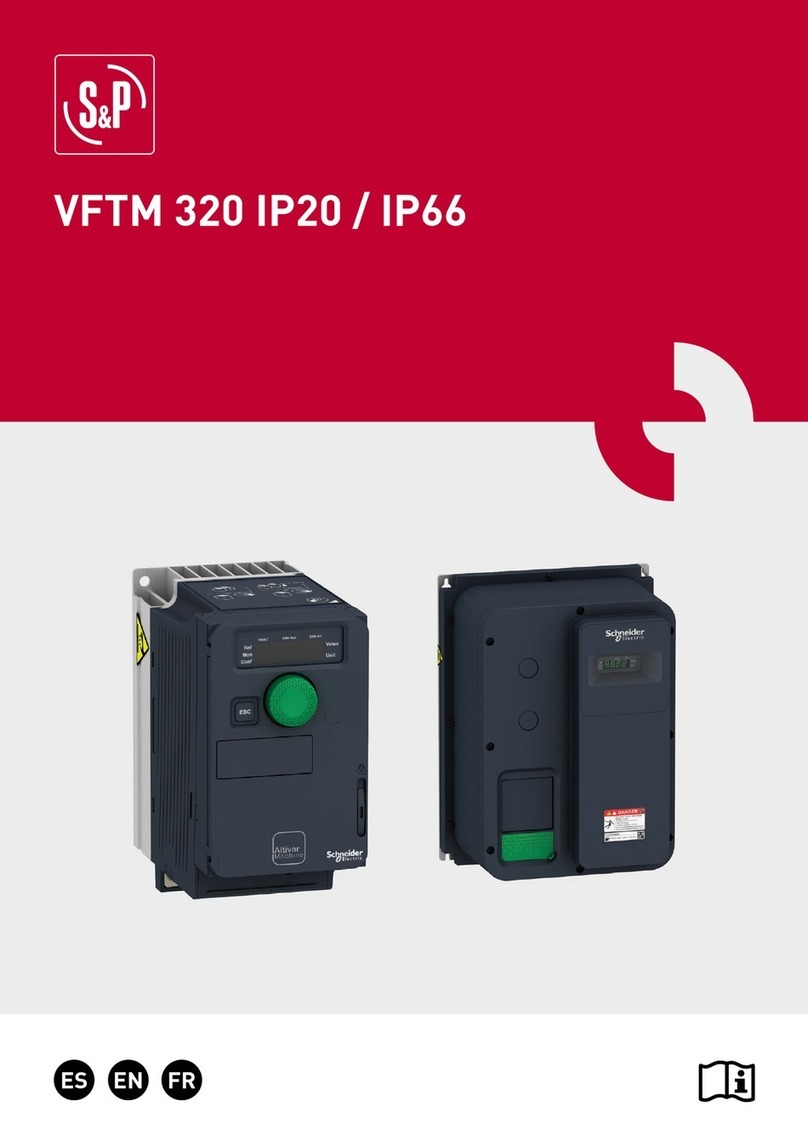Anaheim Automation DPD75601 User manual

1
#L010155 July 2004
DPD75601DPD75601
DPD75601DPD75601
DPD75601
Programmable Driver PackProgrammable Driver Pack
Programmable Driver PackProgrammable Driver Pack
Programmable Driver Pack
User’s GuideUser’s Guide
User’s GuideUser’s Guide
User’s Guide
910 East Orangefair Lane, Anaheim, CA 92801
website: www.anaheimautomation.com
ANAHEIM AUTOMATION, INC.ANAHEIM AUTOMATION, INC.
ANAHEIM AUTOMATION, INC.ANAHEIM AUTOMATION, INC.
ANAHEIM AUTOMATION, INC.

2
#L010155 July 2004
Table of ContentsTable of Contents
Table of ContentsTable of Contents
Table of Contents
Section 1: IntroductionSection 1: Introduction
Section 1: IntroductionSection 1: Introduction
Section 1: Introduction ..................................................................................................................................................................................................................................................................................
..................................................................................................................................................................................................................................................................................
......................................................................................................................................... 33
33
3
Description .............................................................................................................................................................. 3
Electrical Specifications ........................................................................................................................................... 4
OrderingInformation................................................................................................................................................ 4
Dimensions/SwitchLocations .................................................................................................................................. 5
Wiring Diagrams ...................................................................................................................................................... 5
Termianl Descriptions - Power................................................................................................................................. 6
Terminal Descriptions - Driver ................................................................................................................................. 6
Terminal Descriptions - Controller ........................................................................................................................... 7
Connector Descriptions - Controller......................................................................................................................... 7
Slide Switch Descriptions - Controller...................................................................................................................... 7
Section 2: Driver FunctionsSection 2: Driver Functions
Section 2: Driver FunctionsSection 2: Driver Functions
Section 2: Driver Functions ....................................................................................................................................................................................................................................................................
....................................................................................................................................................................................................................................................................
.................................................................................................................................. 88
88
8
Adjusting Kick Current ............................................................................................................................................. 8
JumperFunctions/Locations.................................................................................................................................... 8
Fault Protection ....................................................................................................................................................... 8
Section 3: Controller FunctionsSection 3: Controller Functions
Section 3: Controller FunctionsSection 3: Controller Functions
Section 3: Controller Functions ..................................................................................................................................................................................................................................................
..................................................................................................................................................................................................................................................
......................................................................................................................... 1010
1010
10
Methods of Communication ................................................................................................................................... 10
Baud Rate ............................................................................................................................................................. 10
RS232 Protocol - SW1 in RS232 position.............................................................................................................. 10
RS485 Protocol - SW1 in RS485 position............................................................................................................. 10
Axis Selection ........................................................................................................................................................ 11
Status LED ............................................................................................................................................................ 11
Technical Support.................................................................................................................................................. 11
Section 4: SMC60WIN SoftwareSection 4: SMC60WIN Software
Section 4: SMC60WIN SoftwareSection 4: SMC60WIN Software
Section 4: SMC60WIN Software ..................................................................................................................................................................................................................................................
..................................................................................................................................................................................................................................................
......................................................................................................................... 1616
1616
16
File Menu............................................................................................................................................................... 17
Setup Menu ........................................................................................................................................................... 17
Setup - Axis Menu ................................................................................................................................................. 17
Program Menu....................................................................................................................................................... 18
Program - Autostart Program Menu....................................................................................................................... 18
Edit Menu .............................................................................................................................................................. 18
Help Menu ............................................................................................................................................................. 19
“The Unit is Connected” / “The Unit is NOT Connected”........................................................................................ 19
Toolbar .................................................................................................................................................................. 20
Tab Sheets ............................................................................................................................................................ 20
Tab Sheets - Real Time Motion ............................................................................................................................. 21
Tab Sheets - Encoder Options and Registration Inputs ......................................................................................... 22
Tab Sheets - Analog Input and Thumbwheel Options............................................................................................ 23
Tab Sheets - Create and Edit Program.................................................................................................................. 24
Add/Change/InsertCommands ............................................................................................................................. 25
Add Tab Sheets - Motion Commands.................................................................................................................... 26
Add Tab Sheets - If/Then and Output Commands ................................................................................................. 27
Add Tab Sheets - Goto, For Loops, Encoder and Thumbwheel Commands ......................................................... 28
Add Tab Sheets - Analog, Registration and Text Commands................................................................................ 29
Calculator .............................................................................................................................................................. 30
Section 5: Direct Talk ModeSection 5: Direct Talk Mode
Section 5: Direct Talk ModeSection 5: Direct Talk Mode
Section 5: Direct Talk Mode................................................................................................................................................................................................................................................................
................................................................................................................................................................................................................................................................
................................................................................................................................3131
3131
31
Section 6: TroubleshootingSection 6: Troubleshooting
Section 6: TroubleshootingSection 6: Troubleshooting
Section 6: Troubleshooting ................................................................................................................................................................................................................................................................
................................................................................................................................................................................................................................................................
................................................................................................................................4141
4141
41
Error Codes ........................................................................................................................................................... 42
Section 7: Sample ProgramSection 7: Sample Program
Section 7: Sample ProgramSection 7: Sample Program
Section 7: Sample Program ................................................................................................................................................................................................................................................................
................................................................................................................................................................................................................................................................
................................................................................................................................4343
4343
43
Sample Program 1:................................................................................................................................................ 43
Sample Program 2:................................................................................................................................................ 44
Sample Program 3:................................................................................................................................................ 45
Sample Program 4:................................................................................................................................................ 46
Sample Program 5:................................................................................................................................................ 47
Appendix 1: ASCII Table for Direct Mode .............................................................................................................. 48

3
#L010155 July 2004
Section 1: IntroductionSection 1: Introduction
Section 1: IntroductionSection 1: Introduction
Section 1: Introduction
The DPD75601 is a single-axis 7A unipolar step motor driver, controller containing 2 Kbytes of nonvolatile
stored programming space and quadrature encoder feedback, and a 300W transformer , all enclosed in a
package. It provides flexible, independent control of unipolar step motors with a current range from 1.0 to
7.0 amps in 1.8 or 0.9 degree increments from a computer, or any machine controller with a serial port. It
is also capable of standalone operation, making it an embedded machine controller. The easy to use
Windows software, SMC60WIN, can be used to directly control motion and to program the DPD75601.
The DPD75601 also has the ability for real time functions.
The DPD75601 has 40 commands, which are easy-to-remember for direct movement of the step motor.
The DPD75601 communicates via either an RS232 or RS485 bidirectional serial data bus. Up to 99
DPD75601’s can be networked from one communications port on your PC or PLC, utilizing the RS485
communications protocol. Special functions of the controller include 8 programmable open collector out-
putsand6 TTL,CMOSand 24Vcompatibleinputs,a quadratureencoderinput withtheabilityto autocorrect,
an analog input to control either maximum speed or absolute position, registration mark indexing during a
slew command, an output that will trigger during an index command at an absolute position, and a
thumbwheel input for indexing a motor. The DPD75601 can be powered from 90-265 VAC, 50/60Hz,
DescriptionDescription
DescriptionDescription
Description
The driver in the DPD75601 (BLD75) is a step motor driver that cona drive motors rated from 1.0 to 7.0
amps/phase. It can handle 6-lead and 8-lead motors in a unipolar fashion. The DPD75601 features a
unipolarbilevel (or dualvoltage) drivetechnique with shortcircuit, opencircuit,over voltage,under voltage
and over temperature detection. The DPD75601 offers half-step or full-step operation to move the motor
0.9 or 1.8 degrees per step.
Thecontroller intheDPD75601 (PCL601)providesindependent programmingof acceleration/deceleration,
base speed (start up speed), max speed (running speed), jog speed, and the number of steps to be taken
in both relative and absolute positioning modes. On absolute positioning moves, the DPD75601
automaticallydetermines theproperdirection togo andthe numberofstepstotake. Therelative positioning
will move a number of steps in the direction that the user defines. The DPD75601 also has specific
functions such as
encoder feed back, autocorrection, index-on-the-fly and output-on-the-fly.
An analog
input can be used to set either the maximum speed or goto an absolute position based between the upper
and lower programmable limits. A seven decade thumbwheel switch can be read for relative indexing. The
DPD75601 also has a high level programming command set that includes: branching, looping, conditional
statements, time delays, text strings, and I/O which the user can use in the programming mode to fully
control all machine functionality. A home input, a set of bidirectional hard and soft limit switch inputs and
bidirectional jog inputs are provided for each axis. These features are generally required in most machine
control designs. 6 testable TTL, CMOS and 24V compatible inputs and 8 programmable open-collector
outputs are provided per axis. The I/O may be used for monitoring and controlling machine operation and/
or interaxis coordination. The I/O are accessible independent of the busy state of the axis controls. The
DPD75601 has a built-in programmable reset circuit. Reset is automatic on power-up, or by pressing the
external reset button. A CD, provided when you purchase the unit, contains this user’s manual, along with
theSMC60WIN software andDPD75601 programexamples. Thesoftware allows youto writeand change
programs that are to be stored in the DPD75601 for autostart use, and also upload the program that is
stored in the DPD75601 itself for editing and viewing. The software also allows you to save the programs
onto your computer hard drive, and easily retrieve them when needed.

4
#L010155 July 2004
Electrical SpecificationsElectrical Specifications
Electrical SpecificationsElectrical Specifications
Electrical Specifications
Power Requirements:Power Requirements:
Power Requirements:Power Requirements:
Power Requirements:
90-265 VAC 50/60Hz
Operating Temperature:Operating Temperature:
Operating Temperature:Operating Temperature:
Operating Temperature:
0 to 60 degrees C
Pulse Output Range:Pulse Output Range:
Pulse Output Range:Pulse Output Range:
Pulse Output Range:
1 to 50,000 Hz
10uS negative going pulse width
Inputs (TTL-CMOS):Inputs (TTL-CMOS):
Inputs (TTL-CMOS):Inputs (TTL-CMOS):
Inputs (TTL-CMOS):
Logic “0”: 0 to 0.8VDC
Logic “1”: 3.5 to 24VDC
Analog input 1: 0 to 5VDC
Excitation Mode Select:Excitation Mode Select:
Excitation Mode Select:Excitation Mode Select:
Excitation Mode Select:
Pulled up to +5VDC through 10K
Logic “1” (open) - Half step
Logic “0” - 2 phase Full step
Fault Reset:Fault Reset:
Fault Reset:Fault Reset:
Fault Reset:
Pulled up to +5VDC through 10K
Logic “1” (open) - Fault Detection Enabled
Logic “0” - Resets a fault condition (must be
low for at least 100mS)
Output Current Rating:Output Current Rating:
Output Current Rating:Output Current Rating:
Output Current Rating:
10 A/phase maximum running
7.0A/phase maximum standstill
Baud Rate:Baud Rate:
Baud Rate:Baud Rate:
Baud Rate:
38400 Baud, Fixed
Data Format:Data Format:
Data Format:Data Format:
Data Format:
Half-Duplex, 1 start bit, 8 data bits,
no parity, 1 stop bit
Outputs (8 programmable I/O and fault out):Outputs (8 programmable I/O and fault out):
Outputs (8 programmable I/O and fault out):Outputs (8 programmable I/O and fault out):
Outputs (8 programmable I/O and fault out):
Open Drain Type
40V, 100mA
+5VDC Output, 50mA
Output1 active time for output on the fly:Output1 active time for output on the fly:
Output1 active time for output on the fly:Output1 active time for output on the fly:
Output1 active time for output on the fly:
50uS
Note:Note:
Note:Note:
Note: For inductive loads, customers must connect
a clamping diode to protect from flyback voltage
spikes.
rebmuNtraP noitpircseD
10657DPD ylppusrewopdnaevirdralopinupma7aserutaeF-kcaPevirD/rellortnoC
10601NPD ylppusrewopdnaevirdralopibpma01aserutaeF-kcaPevirD/rellortnoC
BT9DS584retrevnoc584SRot232SR
7SWT 10657DPDhtiwelbitapmochctiwsleehwbmuhtnoitisopneveS
6-CFM9AA .rotcennocelamef9BDenodnaelam9BDenohtiwelbaclaireshguorhtthgiartstoof6
Ordering InformationOrdering Information
Ordering InformationOrdering Information
Ordering Information
Thetable belowlists avariety of productsavailable fromAnaheim Automation,Inc. Theseproducts include
those covered by this manual, along with supporting cables and devices. We are continually adding new
products to our line, so please consult Anaheim Automation, Inc. or its representatives for information on
the latest releases.

5
#L010155 July 2004
Dimensions/Switch LocationsDimensions/Switch Locations
Dimensions/Switch LocationsDimensions/Switch Locations
Dimensions/Switch Locations
Wiring DiagramsWiring Diagrams
Wiring DiagramsWiring Diagrams
Wiring Diagrams

6
#L010155 July 2004
Termianl Descriptions - PowerTermianl Descriptions - Power
Termianl Descriptions - PowerTermianl Descriptions - Power
Termianl Descriptions - Power
The DPD75601 is powered by an AC line voltages ranging from 90-265VAC. The following figure shows
the various line voltages and the wiring for the power connection termianl block.
Terminal Descriptions - DriverTerminal Descriptions - Driver
Terminal Descriptions - DriverTerminal Descriptions - Driver
Terminal Descriptions - Driver
noitisoP snoitcennoCrotoMdnastupnIrevirD-noitpircseD
11esahP,rotoM
23esahP,rotoM
33&1nommoC,rotoM
4teseRtluaF
5 )tuptuonoitceridsrellortnocotnoitcennoclanretni()WCC(noitceriD
6)tuptuokcolcsrellortnocotnoitcennoclanretni()WC(kcolC
7)CDV0srellortnocotnoitcennoclanretni(CDV0
8petSlluF/petS-flaH
9)tuptuoffo/nosrellortnocotnoitcennoclanretni(ffO/nO
01tuOtluaF
114&2nommoC,rotoM
212esahP,rotoM
314esahP,rotoM

7
#L010155 July 2004
Slide Switch Descriptions - ControllerSlide Switch Descriptions - Controller
Slide Switch Descriptions - ControllerSlide Switch Descriptions - Controller
Slide Switch Descriptions - Controller
rebmuNhctiwS noitpircseD
1WS584SRro232SRrehtietcelesotdesusihctiwssihT
2WS 6dna5stupniroleehwbmuhtehtrehtietcelesotdesusihctiwssihT
Connector Descriptions - ControllerConnector Descriptions - Controller
Connector Descriptions - ControllerConnector Descriptions - Controller
Connector Descriptions - Controller
rebmuNhctiwS noitpircseD
1P 232-SRdelebalsidnanoitacinummoc232-SRehtrofsirotcennocsihT
1J SWTdelebalsidnaeludomleehwbmuhtehtrofsirotcennocsihT
Terminal Descriptions - ControllerTerminal Descriptions - Controller
Terminal Descriptions - ControllerTerminal Descriptions - Controller
Terminal Descriptions - Controller
noitisoP 584SR-noitpircseD
1)-(A
2)+(B
3dnuorgdetalosinasisihT-DNGI ylno584SRrof
noitisoP redocnE-noitpircseD
1redocnerofylppusCDV5+
2redocneroflennahcA
3redocneroflennahcB
4redocnerofnruterdnuorG
noitisoP stupnI-noitpircseD
1tupnigolanA-1tupnI
2tupniylfehtnoxednI-2tupnI
33tupnI
44tupnI
56/5NInoitisopni2WS-5tupnI
66/5NInoitisopni2WS-6tupnI
7dnuorG
noitisoP stuptuO-noitpircseD
1tuptuoylfehtnotuptuO-1tuptuO
22tuptuO
33tuptuO
44tuptuO
55tuptuO
66tuptuO
77tuptuO
88tuptuO
noitisoP stupnIhctiwStimiL-noitpircseD
1timiLemoH
2+goJ
3-goJ
4goJtsaF
5+timiLdraH
6-timiLdraH
7+timiLtfoS
8-timiLtfoS
9dnuorG

8
#L010155 July 2004
Jumper Functions/LocationsJumper Functions/Locations
Jumper Functions/LocationsJumper Functions/Locations
Jumper Functions/Locations
noitcnuFnoitcnuF noitcnuF noitcnuFnoitcnuF 1PJ1PJ 1PJ 1PJ1PJ 2PJ2PJ 2PJ 2PJ2PJ 3PJ3PJ 3PJ 3PJ3PJ
)ledoMsihT(skcolCgnioGevitageN2-1xx
skcolCgnioGevitisoP3-2xx
WCC=5lanimreTx2-1x
)ledoMsihT(noitceriD=5lanimreTx3-2x
delbanEnoitceteDtluaFegatloVwoLxx2-1
delbasiDnoitceteDtluaFegatloVwoLxx3-2
tcudorPdradnatS2-13-23-2
Fault ProtectionFault Protection
Fault ProtectionFault Protection
Fault Protection
There are five types of fault detection. When a fault is detected, the driver turns off the motor current, the
red fault LED indicates which type of fault occurred and the Fault Output pin goes low. This output is able
to stand off 50V and sink 50mA. Refer to the table below for LED fault indications.
If a fault occurs, reset the fault by applying a logic “0” to the Reset Fault Input (pin 4) for at least 100ms or
by cycling power off for at least 15 seconds. After resetting, try to run the motor again. If the driver
continues to fault, check the conditions listed on the following page.
sknilBDELfo# noitidnoCtluaF
1tnerruCrevOrotrohS
2noitcennoCrorotoMnepO
3hgiHooTegatloVhgiH
4woLooTegatloVwoL
5erutarepmeTrevO
Section 2: Driver FunctionsSection 2: Driver Functions
Section 2: Driver FunctionsSection 2: Driver Functions
Section 2: Driver Functions
Adjusting Kick CurrentAdjusting Kick Current
Adjusting Kick CurrentAdjusting Kick Current
Adjusting Kick Current
By following the silkscreen instructions on the cover, use a small screwdriver to adjust the potentiometer.
Line up the potentiometer’s arrow to the number corresponding to the motors rated current (amps/phase).
4
3
2
5
6
7
1
4
3
2
5
6
7
1
23L104D-LW8 Motor, Set to 2.0A. 34N314S-LW8 Motor, Set to 7.0A.

9
#L010155 July 2004
Open (Two Blinks)Open (Two Blinks)
Open (Two Blinks)Open (Two Blinks)
Open (Two Blinks)
This indicates that there is an “open” or intermittent connection in one of the motor wires. Check the motor
and the wiring for opens. Another condition that may cause this type of fault, is when a large motor is
ramped down too quickly and it loses its position (stalls).
High Voltage Too High (Three Blinks)High Voltage Too High (Three Blinks)
High Voltage Too High (Three Blinks)High Voltage Too High (Three Blinks)
High Voltage Too High (Three Blinks)
This indicates that the input voltage of the transformer is too high. Check the input voltage of the trans-
former to see if it is within the specified range.
Low Voltage Too Low (Four Blinks)Low Voltage Too Low (Four Blinks)
Low Voltage Too Low (Four Blinks)Low Voltage Too Low (Four Blinks)
Low Voltage Too Low (Four Blinks)
This indicates that there is an excess amount of current being pulled from the driver or the input voltage to
the transformer is too low to provide the amount of current needed by the low voltage winding. Check the
input voltage of the transformer to see if the voltage is within the specified range.
Over Temperature (Five Blinks)Over Temperature (Five Blinks)
Over Temperature (Five Blinks)Over Temperature (Five Blinks)
Over Temperature (Five Blinks)
This is caused by the heat sink reaching a temperature of 80ºC. Make sure proper ventilation or an
additional heat sink is provided so the temperature does not reach this level.
Short (One Blink)Short (One Blink)
Short (One Blink)Short (One Blink)
Short (One Blink)
This indicates that the driver or motor has a phase shorted or there is a “short” in the motor cable or
wiring. Check the motor and the physical wiring for shorts. If the driver continues to sense shorts after the
motor and wiring are determined to be accurate, then the output transistors should be checked using a
multimeter as follows:
1. Set the multimeter to diode test.
2. Place the red lead on ground (pin 7).
3. Touch the black lead to each phase (pins 1, 2, 12, and 13).
4. This should give readings between 0.450V and 0.550V.
5. If any readings are significantly less than 0.450V, then the unit has been damaged.

10
#L010155 July 2004
Section 3: Controller FunctionsSection 3: Controller Functions
Section 3: Controller FunctionsSection 3: Controller Functions
Section 3: Controller Functions
Methods of CommunicationMethods of Communication
Methods of CommunicationMethods of Communication
Methods of Communication
There are two methods for sending commands to the DPD75601. One is to directly talk to the DPD75601
by using Direct Talk Mode. This is usually used with a computer or PLC (Programmable Logic Controller),
where the computer or PLC gives the DPD75601 serial commands to off-load its processor. For example:
A PLC can utilize its outputs to toggle the DPD75601’s inputs and gain control of variable speeds, variable
programs, variable distances, etc. Simply using the DPD75601 as the intelligent pulse generator, a PLC
can remove some of the tasks that were not meant for ladder logic or any PLC processing time.
The second way to give commands to the DPD75601 is to use the software program SMC60WIN to either
manually control, or to write and send programs. This method is used when the DPD75601 is the main
controller. For example: A DPD75601 can replace simple motion control and replace I/O functional when
minimalquantities ofI/O arerequired to controlspecific machinery.Simple motionprofiles thatcan operate
with 6 or less inputs and 8 or less outputs can utilize a DPD75601 controller.
Baud RateBaud Rate
Baud RateBaud Rate
Baud Rate
A term used frequently in serial data communications, a “baud” is defined as the reciprocal of the shortest
pulse duration in a data word signal, including start, stop, and parity bits. This is often taken to mean the
same as “bits per second”, a term that expresses only the number of “data” bits per second. Very often,
the parity bit is included as an information or data bit. The DPD75601 accepts a baud rate of 38400 onlyThe DPD75601 accepts a baud rate of 38400 only
The DPD75601 accepts a baud rate of 38400 onlyThe DPD75601 accepts a baud rate of 38400 only
The DPD75601 accepts a baud rate of 38400 only
.
RS232 Protocol - SW1 in RS232 positionRS232 Protocol - SW1 in RS232 position
RS232 Protocol - SW1 in RS232 positionRS232 Protocol - SW1 in RS232 position
RS232 Protocol - SW1 in RS232 position
The DPD75601 is a DCE device, therefore it will transmit on pin 2 and receive on pin3 of the DB9 RS-232
connector . The RS232 serial communication mode is single ended. This means that for each signal there
is one wire, and a common ground reference used by all the signals. The DPD75601 does not use
handshaking, thus the CTS and RTS lines are internally connected, and the CD, DTR and DSR lines are
internally connected inside the DPD75601. The signal line maintains levels of +5VDC to +15VDC and -
5VDC to -15VDC. For a valid logic level in the controller, the voltage must be at least +/-3 volts. RS232
works at distances of up to 50 feet maximum. RS232 is susceptible to electrical noise, and should notRS232 is susceptible to electrical noise, and should not
RS232 is susceptible to electrical noise, and should notRS232 is susceptible to electrical noise, and should not
RS232 is susceptible to electrical noise, and should not
be used in noisy areas. Always use the shortest cable connection possible. NOTE: Keep controllerbe used in noisy areas. Always use the shortest cable connection possible. NOTE: Keep controller
be used in noisy areas. Always use the shortest cable connection possible. NOTE: Keep controllerbe used in noisy areas. Always use the shortest cable connection possible. NOTE: Keep controller
be used in noisy areas. Always use the shortest cable connection possible. NOTE: Keep controller
wiring separated from motor cable/wiring.wiring separated from motor cable/wiring.
wiring separated from motor cable/wiring.wiring separated from motor cable/wiring.
wiring separated from motor cable/wiring.
RS485 Protocol - SW1 in RS485 positionRS485 Protocol - SW1 in RS485 position
RS485 Protocol - SW1 in RS485 positionRS485 Protocol - SW1 in RS485 position
RS485 Protocol - SW1 in RS485 position
The RS485 protocol mode is as follows; On board receivers will remain in active mode indefinitely.
Transmitters must be turned off when the unit is not sending data, to prevent the line from sending and
receiving data at the same time. Therefore when the PC is transmitting data its driver will be turned on and
each of the units connected will have their drivers off. If they are requested to send data back to the PC,
theselectedunit willturnit’s driveronto sendthedata andthenturn itoffafter ithascompleted transmission.
Note:The aboveprotocol isdone internallybetween the converterand theDPD75601. TheRS485 method
of communication allows increased noise immunity and increased communication distance of up to 4000
feet without repeaters. RS485 repeaters allow an additional 4000 feet per repeater. The DPD75601 is
designed for two wire configuration. The 2 wire configuration makes use of the tristate capabilities of
RS485to allow a singlepair of wires toshare transmit andreceive signals for halfduplex communications.
This “two wire” configuration (note that an additional ground conductor must be used) reduces cabling
cost. NOTE: Keep control wiring separated from motor cable/wiring.NOTE: Keep control wiring separated from motor cable/wiring.
NOTE: Keep control wiring separated from motor cable/wiring.NOTE: Keep control wiring separated from motor cable/wiring.
NOTE: Keep control wiring separated from motor cable/wiring.

11
#L010155 July 2004
RS232 to RS485 for multiple units or cables longer than 50ftRS232 to RS485 for multiple units or cables longer than 50ft
RS232 to RS485 for multiple units or cables longer than 50ftRS232 to RS485 for multiple units or cables longer than 50ft
RS232 to RS485 for multiple units or cables longer than 50ft
TheDPD75601 canbe connectedto yourPC serialport viaa RS485converter(
modelnumber:
485SD9TB
soldseparately
).This converterwill convertthe RS232voltage signalsto thecompatible RS485differential
signals. Only one converter box is needed per serial port. Contact the factory or use the website
www.anaheimautomation.com for RS485 converter information and sales.
Terminating ResistorTerminating Resistor
Terminating ResistorTerminating Resistor
Terminating Resistor
To eliminate noise on the transmission lines or when using a 4000 ft. or longer cable, a terminating
resistor is suggested. If used, the termination resistor need only be added to the last (furthest from the
converter box) DPD75601 in the network between pins A(-) and B(+) on the RS485 Terminal Block. The
value of this resistor should be 120 ohms.
Axis SelectionAxis Selection
Axis SelectionAxis Selection
Axis Selection
Each DPD75601 is addressed using a programmable register allowing the PC to address up to 99
DPD75601’s from one port. The Default axis is “0”. To change the axis, use the SMC60WIN software or
the “~” command. To verify or check the axis, use the SMC60WIN software or the “%” command. The axis
designation is nonvolatile and will remain the same until changed by the user.
Status LEDStatus LED
Status LEDStatus LED
Status LED
When powered and operated properly, the status LED will be green. When an error occurs, the LED will
change to RED, and an error code will be generated in the error code register. To read and clear the error
with the software, click on the “Verify Parameters” button located in the “Motion Tab”. To read and clear
the error while in “Direct Mode”, use the error code “!” command. Once the error has been read and
cleared, the LED will return to green and the error code register will be cleared to 0. Refer to the table on
page 39 for a complete list of the error codes.
Technical SupportTechnical Support
Technical SupportTechnical Support
Technical Support
Everyone needs assistance on occasion. If you have problems using any of the equipment covered by
this manual, please read the manual to see if it will answer your questions. Be sure to look in the Trouble-
shooting Section located near the back of this manual. If you need assistance beyond what this manual
can provide, you may call the factory direct for application assistance. If possible, have this manual in
hand. It is often helpful to have the controller connected to a computer with the software installed.

12
#L010155 July 2004
Move Number of Steps:Move Number of Steps:
Move Number of Steps:Move Number of Steps:
Move Number of Steps: This command causes the motion to start in the direction last specified. This
command will move the motor the number of steps given. (Range: 1 to 8388607)
Move to Position:Move to Position:
Move to Position:Move to Position:
Move to Position: The move to position command specifies the next absolute position to go to. The
DPD75601 controller automatically sets the direction and number of steps needed to go to that posi-
tion. (Range: -8388607 to +8388607)
Slew:Slew:
Slew:Slew:
Slew: The slew command will accelerate the motor up to maximum speed and continue to run at that
speed until reaching a registration mark, hard limit switch, soft limit switch, receiving a “.” (stop hard) or
“,” (stop soft) command.
Set Position:Set Position:
Set Position:Set Position:
Set Position: The set position command sets the position register to a designated value. The number
will be the new absolute position of the motor. The default value is 0. (Range: -8388607 to +8388607)
Limit Switch Inputs:Limit Switch Inputs:
Limit Switch Inputs:Limit Switch Inputs:
Limit Switch Inputs: The limit switch inputs are internally pulled up by a resistor making them normally
+5 volts. To activate the input, the pin must be grounded to (0VDC). All limit switch inputs are internally
clamped to +5V, thus allowing voltages of upto +24VDC to be used.
Hard Limit Inputs:Hard Limit Inputs:
Hard Limit Inputs:Hard Limit Inputs:
Hard Limit Inputs: When a hard limit switch is encountered, the motion will stop immediately. The
position counter will also cease counting.
Hard limits are intended as an emergency stop for your
system. It should not be used to do any positioning type functions
. These limits are directional.
Soft Limit Inputs:Soft Limit Inputs:
Soft Limit Inputs:Soft Limit Inputs:
Soft Limit Inputs: These switches should be used exclusively for homing. Once positioned properly
with the appropriate parameters, it causes the motor to ramp down to the base speed before encoun-
tering the home limit switch. However, the soft limit switch will work for any type of motion command.
These limits are directional.
NOTE: Whenever a soft limit switch is activated, the motor will decelerate and run at base speed during
an indexing move, or stop during a slewing move. Be sure to come back past the soft limit switch to set
any origins, otherwise the motor will decelerate as it goes past the soft limit switch during normal
operation.
Home Limit Input:Home Limit Input:
Home Limit Input:Home Limit Input:
Home Limit Input: This switch is used to establish a position designated “home” or datum position
using the following: home to
soft and home limit
, or home to
home limit
. This limit is not directional.
Home to Soft, Home Limit (2 Switch Operation):Home to Soft, Home Limit (2 Switch Operation):
Home to Soft, Home Limit (2 Switch Operation):Home to Soft, Home Limit (2 Switch Operation):
Home to Soft, Home Limit (2 Switch Operation): This type of homing routine requires two grounding
type limit switches called home and soft. The first limit switch seen is the soft limit. This will decelerate
the motor down to base speed. The motor will then continue to run at base speed until it contacts the
home limit switch input causing the motor to stop. The home limit switch activates as a hard limit if a
soft limit is not sensed. The soft limit is directional, meaning that it will work in only one direction as
specified. The soft limit switch will work for any type of motion command. The home limit switch will
work only for the two home motion commands.
NOTE: There should be sufficient distance between the two limit switches, as to let the motor reach
base speed.
Home to Home Limit (1 Switch Operation)Home to Home Limit (1 Switch Operation)
Home to Home Limit (1 Switch Operation)Home to Home Limit (1 Switch Operation)
Home to Home Limit (1 Switch Operation): This type of homing differs in that only one limit switch is
needed. In this homing routine the motor moves toward the home limit switch. When the home limit
switch is contacted the motor will ramp down to base speed, reverse direction and continue at base
speed until the limit switch is released. This is a good way to compensate for any backlash in a sys-
tem. It is also useful for minimizing the number of limit switches needed for homing.
NOTE: The home switch needs to be low during the entire deceleration and reversing time.

13
#L010155 July 2004
Jog Inputs:Jog Inputs:
Jog Inputs:Jog Inputs:
Jog Inputs: The jog switch inputs are internally pulled up by a resistor making them normally +5 volts.
To activate the input, the pin must be grounded to (0VDC). All jog switch inputs are internally clamped
to +5V, thus allowing voltages of upto +24VDC to be used. Jog is a manual function. The user can
select the direction and speed (fast or slow) by grounding the appropriate combinations of inputs. To
jog a motor, it is necessary to ground the jog input for the direction desired. For fast jog, both the fast
input and jog input for the appropriate direction must be low at the same time. By grounding one of the
jog inputs, the user causes the motor to run at base speed. When the fast input is grounded, the motor
will then accelerate to the programmed jog speed. The position register will keep track of the number of
steps that are taken during jogging. Once a +jog or a -jog function has been performed, the direction
register will retain the last direction of movement; that is, a subsequent go command will be in the same
direction as the last jog command.
Inputs:Inputs:
Inputs:Inputs:
Inputs: All inputs (except input 1) are internally pulled up by a resistor making them normally +5 volts.
To activate the input, the pin must be grounded to (0VDC). All inputs are internally clamped to +5V,
thus allowing voltages of upto +24VDC to be used. Six inputs are provided per axis. The inputs are
TTL, CMOS and 24V compatible. The inputs may be used to initiate a machine cycle, for inter-axis
coordination (in stored program mode), for operator intervention, for sensing a machine condition such
as out of stock or wait for temperature to be reached, etc. A grounded input will read a “0” and an open
or high input will read as a “1”. Input 1 is a special input that is capable of reading an analog voltage
between 0 and +5VDC. Since this input does not have a pull-up resistor, biasing of this input is needed
if it is not used as an analog input. Inputs 5 and 6 are used together with the thumbwheel switch. To
use inputs 5 and 6, SW2 must be in the IN5/6 position. If SW2 is in the TWS position, then these two
inputs are not connected to the processor.
Analog Input:Analog Input:
Analog Input:Analog Input:
Analog Input: Input 1 can be configured to read an analog voltage to either set the absolute position of
the motor or to set the maximum speed of the motor.
To set the positionTo set the position
To set the positionTo set the position
To set the position, when told via the
goto analog position
command, the input will read a voltage
between 0 and +5VDC and based on the” upper and lower” limits of the function, a move will occur to a
calculated position between the two limits. The motor must finish the move before it can be told to read
the input again for the next position. For example, if the lower limit is set to 0 and the upper limit is set
to 5000 and the analog position is set at +2.0VDC, then the motor will move to position 2000. Changing
the lower limit to 1000 and the voltage to +3.2VDC, the motor will move to position 3560. See examples
below for calculations of the analog inputs. (Range of limits: 0 to 65535 and the lower limit < upper limit)
To set the max speedTo set the max speed
To set the max speedTo set the max speed
To set the max speed, when told via the
set analog speed
command the input will read a voltage
between 0 and +5VDC, and based on the “upper and lower” limits of the function, a max speed can be
obtained based on a calculated frequency between the two points. The speed however can not be
changed when the DPD75601 is busy (moving). See examples below for calculations of the analog
inputs. (Range of limits: 0 to 50000 and the lower limit < upper limit)
Analog calculations.Analog calculations.
Analog calculations.Analog calculations.
Analog calculations. Example1:Example1:
Example1:Example1:
Example1: Example2:Example2:
Example2:Example2:
Example2:
(Upper-Lower) * (Voltage/5) = X (5000 - 0) * (2 / 5) = 2000 (5000 - 1000) * (3.2 / 5) = 2560
Lower + X = Position or Frequency 0 + 2000 = 2000 1000 + 2560 = 3560
Outputs:Outputs:
Outputs:Outputs:
Outputs: Eight outputs are provided per axis. Outputs may be used to operate relays, coolant valves,
air cylinders, or, with the correct interfacing, any electronically controlled device. The outputs can drive
all types of common peripheral power loads, including lamps, relays, solenoids, LED’s, printer heads,
and heaters. For inductive loads, it will be necessary to connect a clamping diode (refer to specification
section) from the output to the power source in order to provide adequate fly-back protection. The
outputs are current sinking, open collector darlingtons. They are capable of sinking up to 100mA per
output with voltages up to 40VDC. Turning an output on will pull the output pin to ground and turning an
output off will make the output pin open. Output 1 has a special function
(output on the fly
) that will
enable it to be triggered at a certain absolute position during a move.

14
#L010155 July 2004
Output on the fly:Output on the fly:
Output on the fly:Output on the fly:
Output on the fly: This special function enables output 1 to turn on during a relative index or absolute
move. There are three critical portions of information needed to make this function work correctly. First,
output 1 will turn on (0VDC) for a preset delay of 50uS at a specific absolute position set by the
1st
output position
command. Second, the output can then repeat this after a preset amount of steps set by
the
number of steps between outputs
command, and third a predetermined amount of times to set the
output is required by the
number of outputs
command which determines the preset amount of times to
trigger the output. So if you start at position 0 and want to move to an absolute position of 10,000, you
can set output 1 to turn on at position 2000, and every 1000 steps after that 5 times. So at position
2000, 3000, 4000, 5000, and 6000 output 1 will turn on for 50uS. To only have the output turn on at one
position set both the “
number of steps between outputs
” and the “
number of outputs
” commands to 0.
This function must be enabled, and will only work during a relative index or absolute position move. The
output will trigger while going in either direction. If you do not want the output to trigger in the negative
direction, the function must be turned off before the index move is started.
Index on the Fly:Index on the Fly:
Index on the Fly:Index on the Fly:
Index on the Fly: This special function uses Input 2 when a motor is slewing to move a predetermined
amount of steps, set with the registration index command, before stopping. This function must be
enabled, and will only work during a slew move. The registration index must be set before movement
begins. (Range: 1 to 8388607)
End of Program:End of Program:
End of Program:End of Program:
End of Program: The end of program command, used within a stored program, stops execution of the
program. This command must be used at the end of all programs.
Wait:Wait:
Wait:Wait:
Wait: In stored program mode, the wait command pauses the program for the specified number of
milliseconds. (Range: 1 to 65535)
If/Then Statements:If/Then Statements:
If/Then Statements:If/Then Statements:
If/Then Statements: The if/then statements are conditional based on the values preset in the program.
The user can either test each individual input or all inputs at once. If the input or input register matches
the given value or values, then the program will execute the next line. If the input or input register does
not match the given value, the program will skip the next line and execute the following line. An open
input is read as a 1, and a grounded input is read as a 0.
Branching or Goto Statements:Branching or Goto Statements:
Branching or Goto Statements:Branching or Goto Statements:
Branching or Goto Statements: The goto instruction will have the program jump to the given label. If
no label is in the program, it will error when trying to send.
Return from Subroutine:Return from Subroutine:
Return from Subroutine:Return from Subroutine:
Return from Subroutine: This function can be placed anywhere in the program as long as a goto
statement has been already executed. The program will jump back to the last goto statement encoun-
tered and execute the next line in the program.
Inner and Outer Loop:Inner and Outer Loop:
Inner and Outer Loop:Inner and Outer Loop:
Inner and Outer Loop: The loop instructions allow the user to loop a program a variable number of
times. The program will loop to the designated label location of the program. However , the label must
always be at a lower line number than the loop instruction itself. You can only nest inner loops inside an
outer loop. You may not nest an inner loop inside an inner loop, or an outer loop inside an outer loop.
Multiple nested inner loops are allowed in one outer loop.
Finish Move:Finish Move:
Finish Move:Finish Move:
Finish Move: When writing a program, the finish move command is used directly after every motion
command. When using this command, the DPD75601 internally generates a busy signal and will wait
until the move is complete before executing any further commands. Unless the finish move command is
used, the DPD75601 will continue to execute the program. If it encounters a command that cannot be
used when the motor is moving, the DPD75601 will error and stop the program prematurely.
Repeat Last Move:Repeat Last Move:
Repeat Last Move:Repeat Last Move:
Repeat Last Move: This command will move the motor the number of steps given in the last indexing
move. This command will not work correctly if the encoder autocorrect function is enabled.

15
#L010155 July 2004
Encoder Commands:Encoder Commands:
Encoder Commands:Encoder Commands:
Encoder Commands: The DPD75601 controller is capable of using a quadrature incremental encoder
with A and B channels.
Encoder Auto Correct:Encoder Auto Correct:
Encoder Auto Correct:Encoder Auto Correct:
Encoder Auto Correct: This command will enable or disable the encoder feature of the DPD75601.
When enabled, the encoder function will compare the desired position with the actual encoder position.
If it is not in the correct position a correction move will be made.
Encoder DelayEncoder Delay
Encoder DelayEncoder Delay
Encoder Delay: This sets the wait time, which is a specified number of milliseconds after a relative
index or absolute move is finished, prior to reading the encoder. This is used to remove the ringing that
might be associated with the mechanics of the system. (Range: 0 to 65535)
Encoder Motor Ratio:Encoder Motor Ratio:
Encoder Motor Ratio:Encoder Motor Ratio:
Encoder Motor Ratio: This represents the ratio for the number of encoder pulses to one motor step.
This ratio must be a whole number. For example, given a 1000 line quadrature encoder and a 400 step/
revolution motor, the motor ratio is (1000 * 4) / 400 = 10 (Range: 1 to 255 and must be a whole num-
ber)
Encoder Retries:Encoder Retries:
Encoder Retries:Encoder Retries:
Encoder Retries: This is the number of times the DPD75601 will try to autocorrect the motor shaft
position before producing an error. (Range: 0 to 255)
Encoder Window:Encoder Window:
Encoder Window:Encoder Window:
Encoder Window: This is the allowable error in encoder pulses (either plus or minus) from the desired
position that is allowed before the motor autocorrects. (Range: 0 to 255)
Thumbwheel Index:Thumbwheel Index:
Thumbwheel Index:Thumbwheel Index:
Thumbwheel Index: This special function allows a thumbwheel with up to 7 decades to be used with
the DPD75601 to set a relative index. To use the thumbwheel, SW2 must be in the TWS position or the
thumbwheel will be disabled.
Acceleration/Deceleration:Acceleration/Deceleration:
Acceleration/Deceleration:Acceleration/Deceleration:
Acceleration/Deceleration: The acceleration and deceleration are the same value. The acceleration is
entered directly as steps/sec2and controls the time that the motor will take to move from base speed to
max speed, and from max speed to base speed. The higher the value, the faster the motor will acceler-
ate. The same principal applies for the deceleration which is controlling the time it takes to go from the
max speed to base speed. (Range: 100 to 9,999,999)
Base Speed:Base Speed:
Base Speed:Base Speed:
Base Speed: The base speed is the speed at which motion starts and stops. It is entered directly as
the number of steps per second. This speed must always be less than the max speed and jog speed.
(Range: 1 to 5000)
Max Speed:Max Speed:
Max Speed:Max Speed:
Max Speed: The max speed is the top speed the user wants the motor to run. This speed must always
be greater than the base speed. It is entered directly as the number of steps per second.
(Range: 1 to 50000)
Jog Speed:Jog Speed:
Jog Speed:Jog Speed:
Jog Speed: The jog speed sets the fast jog rate. Jog (+/-) is used to run at base speed. The FJOG pin,
when grounded, will ramp the motor to the set jog speed. This speed must always be greater than the
base speed. It is entered directly as the number of steps per second. (Range: 1 to 50000)
Motor Current:Motor Current:
Motor Current:Motor Current:
Motor Current: This command will control the on/off output which is designed to connect to the on/off
input of Anaheim Automation’s step motor drivers. To energize and allow current to flow through the
coil of the motor, set the value to on. To de-energize and turn the current off to the motor, set the value
to off. This is a dedicated output and not controlled with the output register.
Verify:Verify:
Verify:Verify:
Verify: The verify command causes the DPD75601 controller to send data back to the PC or PLC. The
data is sent as an ASCII decimal string followed by a carriage return and a line feed. The verify com-
mands are shown in the table on page 34.

16
#L010155 July 2004
Section 4: SMC60WIN SoftwareSection 4: SMC60WIN Software
Section 4: SMC60WIN SoftwareSection 4: SMC60WIN Software
Section 4: SMC60WIN Software
The SMC60WIN software is a handy utility that supports Anaheim Automation’s line of DPD75601’s step
motor controllers. Connecting your PC to the DPD75601, via a serial cable, the SMC60WIN software can
easily perform the following tasks:
••
••
• Exercise and monitor the DPD75601 controller
••
••
• Write and edit stored programs for standalone operation
••
••
• Directly communicate with the DPD75601 controller
InstallationInstallation
InstallationInstallation
Installation
SoftwareSoftware
SoftwareSoftware
Software
••
••
• The SMC60WIN is supplied on a CD, containing the setup program and the SMC60WIN
software, DPD75601 manual and sample programs.
••
••
• SMC60WIN is compatible with all versions of Windows including Windows 2000 and
Windows XP.
Windows 95/98/NT/ME/2000/XP InstallationWindows 95/98/NT/ME/2000/XP Installation
Windows 95/98/NT/ME/2000/XP InstallationWindows 95/98/NT/ME/2000/XP Installation
Windows 95/98/NT/ME/2000/XP Installation
Option 1
1) Insert the CD into the drive
2) On the Windows Taskbar select StartStart
StartStart
Start | RR
RR
Runun
unun
un
3) Enter D:\setupD:\setup
D:\setupD:\setup
D:\setup and click OKOK
OKOK
OK - use the appropriate drive letter (i.e. DD
DD
D or EE
EE
E)
Option 2
1) Open Windows Explorer
2) Open CD Drive Folder (D: or E:)
3) Double click the Setup Icon
Getting StartedGetting Started
Getting StartedGetting Started
Getting Started
1) Double click on the SMC60WIN icon to run the SMC60WIN software.
2) Apply power to the DPD75601 controller.
3) Set the appropriate com port setting by selecting Setup | Com Port Settings from the menu bar.
(Ctrl+M is a shortcut)
4) Set the appropriate axis setting by selecting Setup | Axis from the menu bar.
(Ctrl+A is a shortcut)
5) Establish communications with the DPD75601 by clicking on the Connect Icon, or select
Setup | Connect from the menu bar. If the unit is connected properly, the program will notify you
when communications has been established. (Ctrl+C is a shortcut)

17
#L010155 July 2004
NmargorPwe.margorpwenagnitidetratS
OmargorPnep.ksidmorfmargorpgnitsixenanepO
SsAmargorPeva.ksidotmargorptnerrucehtevaS
P...tnir.margorptnerrucehttnirP
Exti.erawtfosNIW06CMSehttixE
FF
FF
File Menuile Menu
ile Menuile Menu
ile Menu
SS
SS
Setup Menuetup Menu
etup Menuetup Menu
etup Menu
Ctcenno.rellortnocehthtiwsnoitacinummochsilbatsE
Dtcennocsi.esuotsecivedrehtoroftropMOCehtesaeleR
moCP sgnitteStro.tropMOCtceleS
Asix.rellortnocehtfosixaderotsdnanoitcelessixateS
SS
SS
Setup -etup -
etup -etup -
etup - AA
AA
Axis Menuxis Menu
xis Menuxis Menu
xis Menu
SsixAtcele )99-1(.erawtfosNIW06CMSehtniretemaraptcelessixaehtsteS
DsixAenife )99-1(.rellortnocehtnisserddaelbammargorpehtsteS

18
#L010155 July 2004
SmargorPtrat .yromemrellortnocehtnimargorpehtfonoitucexeehttratS
St margorPpo .yromemrellortnocehtnimargorpehtfonoitucexeehtpotS
VmargorPwei.yromemrellortnocehtniderotsmargorpehtweiV
CyromeMmargorPrael.rellortnocehtniyromemmargorpehtraelC
AmargorPtratsotu.fforononoitcnuftratsotuaehtnruT
PP
PP
Program Menurogram Menu
rogram Menurogram Menu
rogram Menu
Delbasi .purewoptamargorpderotsafonoitucexeehtelbasidlliwmargorP
Eelban .puderewopsirellortnocnehwnoitucexetratslliwmargorP
PP
PP
Program -rogram -
rogram -rogram -
rogram - AA
AA
Autostart Program Menuutostart Program Menu
utostart Program Menuutostart Program Menu
utostart Program Menu
Add.magorpehtfodneehtotedocfoenilwenasddA
Cegnah.edocfoenildetcelesyltnerrucehtstidE
Itresn .edocfoenildetcelesyltnerrucehterofebedocfoenilwenatresnI
Detele.edocfoenildetcelesyltnerrucehtseteleD
EE
EE
Edit Menudit Menu
dit Menudit Menu
dit Menu

19
#L010155 July 2004
“The Unit is Connected” / “The Unit is NOT Connected”“The Unit is Connected” / “The Unit is NOT Connected”
“The Unit is Connected” / “The Unit is NOT Connected”“The Unit is Connected” / “The Unit is NOT Connected”
“The Unit is Connected” / “The Unit is NOT Connected”
On the right of the Toolbar, the user will find the communication status of the DPD75601 controller. If
communications are not established, please refer to the Troubleshooting Section.
HH
HH
Help Menuelp Menu
elp Menuelp Menu
elp Menu
EredaeRredoCrorr .rellortnoc10657DPDehtybdetarenegedocrorreehtdaerotytilitU
PediuGs'resU106LC.tamroffdp.niediuGs'resUehtpusnepO
wmoc.noitamotuamiehana.ww.etisbeWnoitamotuAmiehanAehtpusnepO
Atuob .noitamrofnitcatnocdnaNIW06CMSehtfonoisrevehtsyalpsiD

20
#L010155 July 2004
ToolbarToolbar
ToolbarToolbar
Toolbar
Exit New Open Save Print Calculator Stop All ConnectExit New Open Save Print Calculator Stop All Connect
Exit New Open Save Print Calculator Stop All ConnectExit New Open Save Print Calculator Stop All Connect
Exit New Open Save Print Calculator Stop All Connect
tixE.erawtfosNIW06CMSehttixE
weN.margorpwenagnitidetratS
nepO.yrotceridroksidmorfmargorpgnitsixenanepO
evaS.yrotceridroksidotmargorptnerrucehtevaS
tnirP.margorptnerrucehttnirP
rotaluclaC.rotaluclacpotksedehtnepO
llApotS.gninnurmorfnoitomlladnamargorpehtpotS
tcennoC.rellortnocehthtiwnoitacinummochsilbatsE
Tab SheetsTab Sheets
Tab SheetsTab Sheets
Tab Sheets
noitoMemiTlaeR.rellortnocehtfonoitomlortnocdnarotinoM
dnasnoitpOredocnE stupnInoitartsigeR .ylfehtnotuptuodnaylfehtnotupni,snoitporedocnerofsgnittesegnahcdnarotinoM
leehwbmuhTdnatupnIgolanA snoitpO .sehctiwsleehwbmuhtehtdnastupnIgolanAotsgnittesegnahcdnarotinoM
smargorPtidEdnaetaerC.smargorpderots10657DPDtidednaetirW
Other manuals for DPD75601
1
Table of contents
Other Anaheim Automation DC Drive manuals
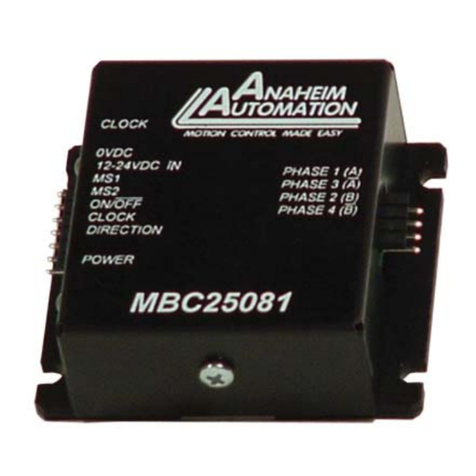
Anaheim Automation
Anaheim Automation MBC25081-06 User manual
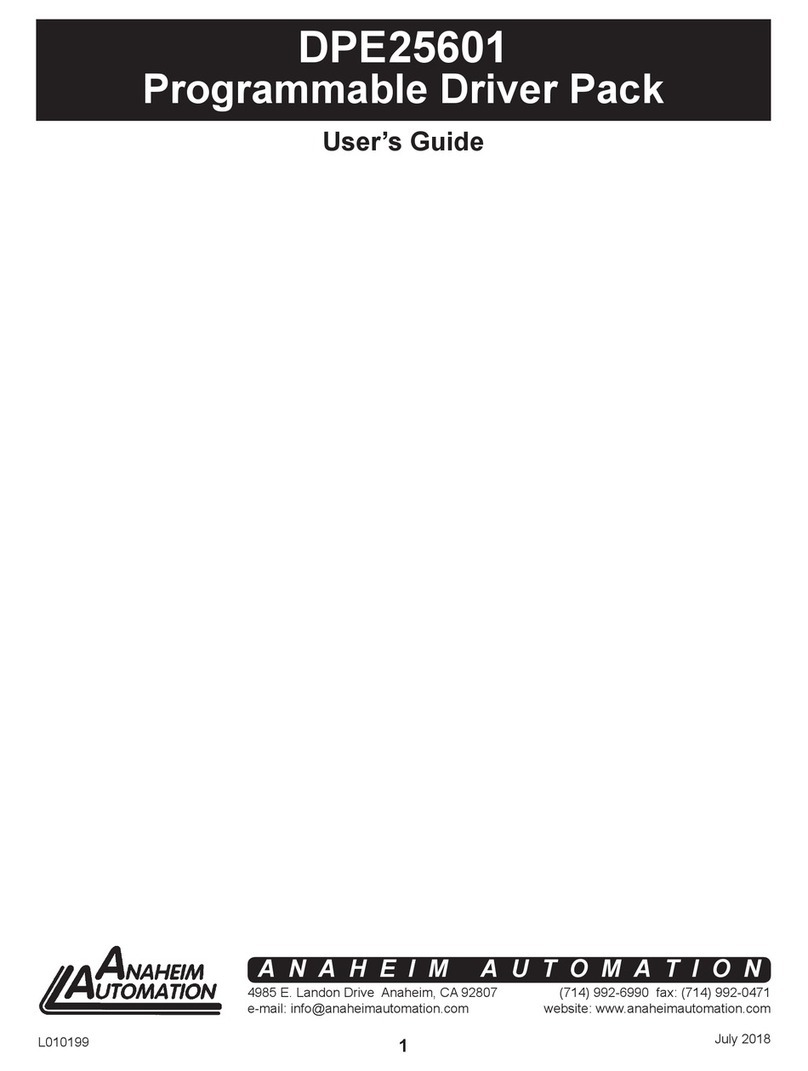
Anaheim Automation
Anaheim Automation DPE25601 User manual
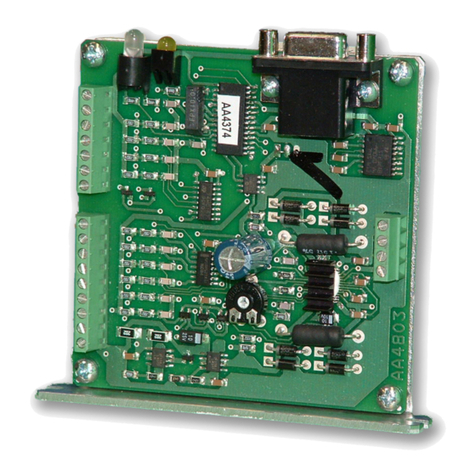
Anaheim Automation
Anaheim Automation MBC25SI1TB User manual
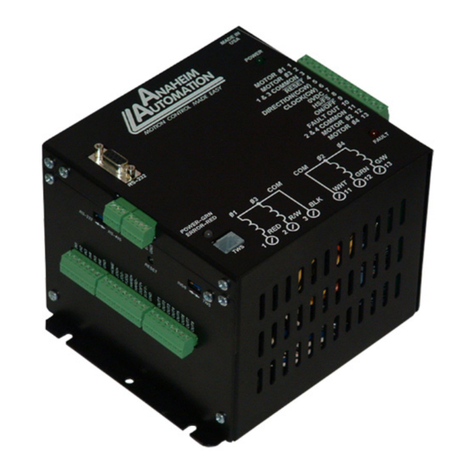
Anaheim Automation
Anaheim Automation DPD75601 User manual
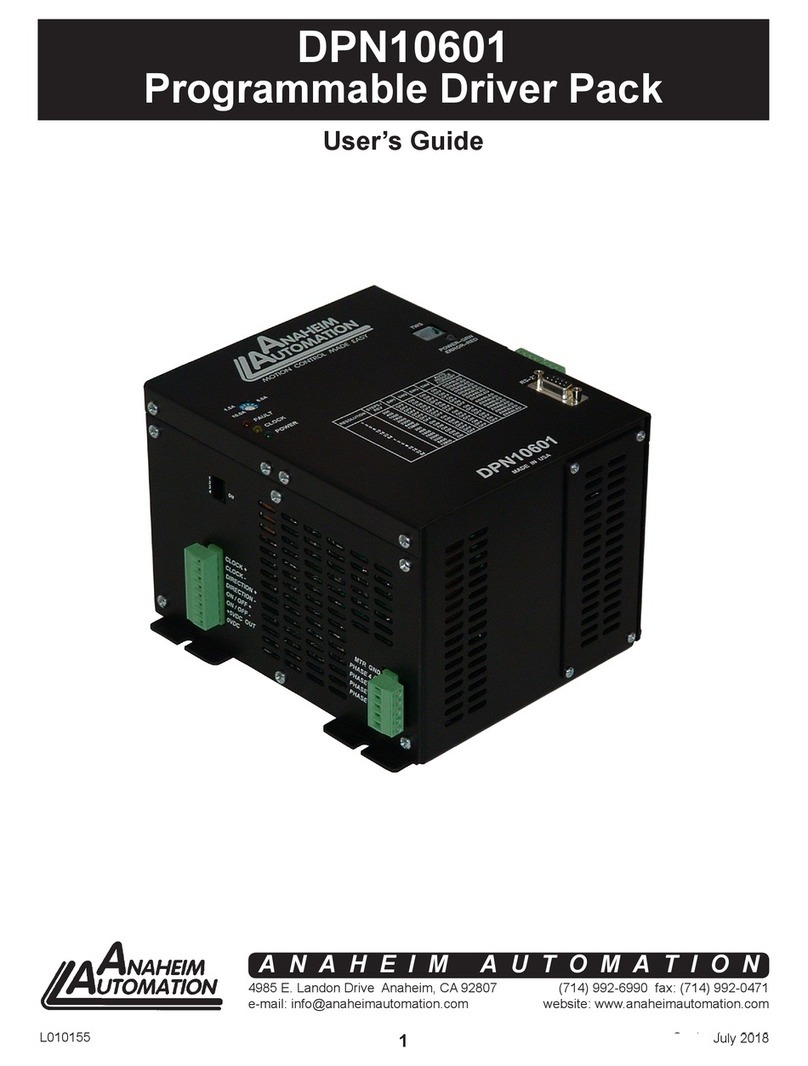
Anaheim Automation
Anaheim Automation DPN10601 User manual
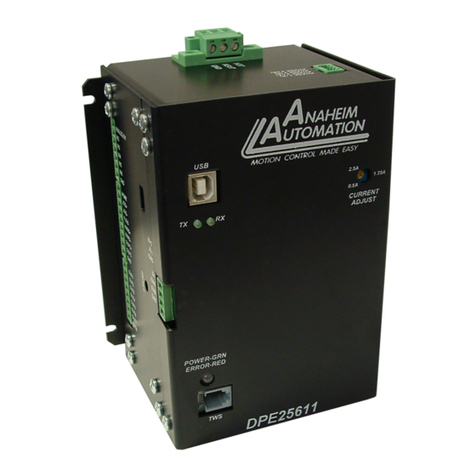
Anaheim Automation
Anaheim Automation DPE25611 User manual

